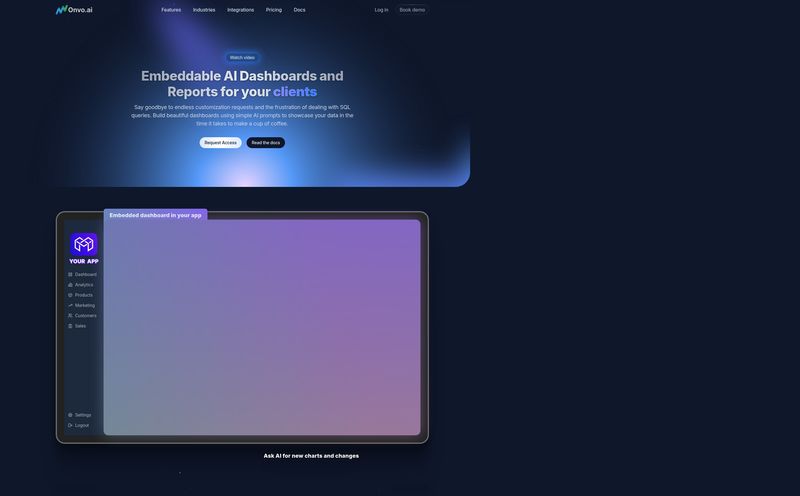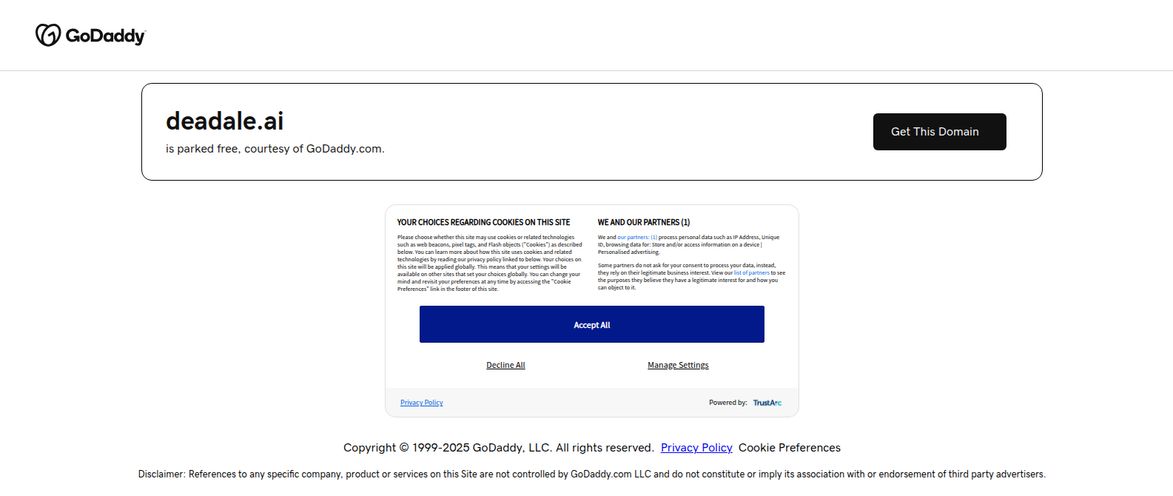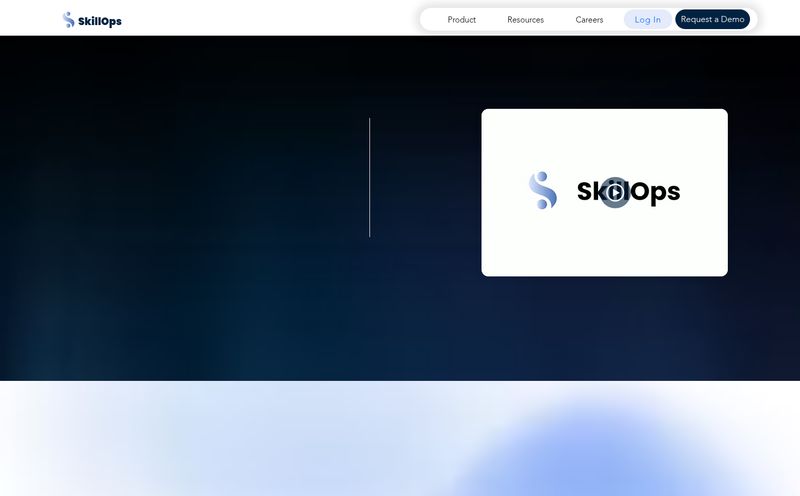I’ve been in the SEO and digital marketing game for... well, let's just say long enough to remember when 'trend spotting' involved a stack of magazines, a whole lot of guesswork, and maybe a gut feeling after too much coffee. We’d look at what was happening on the runways in Milan or the tech blogs in Silicon Valley and try to connect the dots for our clients. Sometimes we were right. Other times, we were very, very wrong. (I'm still trying to forget my bold prediction that QR codes on everything would be the future back in 2011. A bit too early on that one.)
Today, the game is completely different. We're swimming in data. Drowning in it, sometimes. The challenge isn't finding information; it's finding the signal in the noise. And more importantly, it's about finding that signal before it becomes a deafening roar that everyone else is already capitalizing on. That’s where tools like Nextatlas come in, promising to be less of a rearview mirror and more of a crystal ball.
I’ve been seeing their name pop up more and more, so I decided to take a look under the hood. Is it just another buzzword-heavy platform, or is there something genuinely powerful here for marketers, strategists, and traffic generators like us?
So, What Exactly is Nextatlas?
At its heart, Nextatlas is a trend forecasting service that uses AI to do the heavy lifting. But here’s the bit that caught my eye: it focuses on early adopter detection. Think about it. Most trends don't just appear out of thin air. They start small, in niche communities, with people who are always on the bleeding edge. The innovators. The people your cool younger cousin follows on TikTok.
Nextatlas claims its AI-powered engine continuously scans data from over 300,000 of these global innovators and early adopters. It’s not just looking at what’s currently trending on Twitter. It's trying to map the slow-brewing changes in consumer behaviour that will become mainstream in six months, a year, or even longer. It’s like having a secret listening post tuned directly into the zeitgeist of tomorrow. Pretty cool, right?

Visit Nextatlas
The Core Features That Make It Tick
Okay, so the concept is solid. But what are you actually getting? It’s not just a fancy dashboard with some charts. The platform is built around a few key functions that work together.
AI-Powered Foresight and Trend Prediction
This is the main event. Nextatlas uses its data to provide predictive insights. Instead of just telling you “sustainability is a big topic” (thanks, Captain Obvious), it aims to show you the specific micro-trends bubbling up within that space. Maybe it's a new type of biodegradable packaging gaining traction in Scandinavia or a specific upcycling method popular with Gen Z designers in Japan. It gives you that granular view, which is where the real opportunities lie.
The Magic of Early Adopter Detection
I have to come back to this because it’s the secret sauce. In marketing, we often talk about the diffusion of innovation theory—innovators, early adopters, early majority, and so on. Most trend tools are great at spotting when a trend hits the early majority. The problem? By then, the market is already getting crowded. Nextatlas’s focus on those first two groups is a strategic advantage. It allows you to understand the 'why' behind a new behavior, not just the 'what'. You get to see the seeds of a trend before they've even sprouted.
Turning Social Chatter into Actionable Data
Here’s something my fellow data nerds will appreciate. Nextatlas doesn't just give you vague ideas; it provides quantification and measurement. It translates all that fuzzy social conversation into hard data. You can see the growth trajectory of a trend, its adoption rate, and the demographic and psychographic profile of the people driving it. This is the difference between having a neat idea and having a data-backed business case for a new product, a new campaign, or a new content strategy.
The Good, The Bad, and The... Missing Price Tag
No tool is perfect. And as a professional skeptic, I always look for the trade-offs. So let's get into the nitty-gritty of what I like and what gives me pause.
What I Really Like About Nextatlas
The level of detail is impressive. You’re not just getting top-level trends, but the nuanced insights that can genuinely shape a marketing strategy. A big name like Mondelez uses them, with their Strategic Foresight Lead saying, “I could not be happier with the team and the level of cooperation we have. Nextatlas data helps us to quantify the magnitude of our qualitative observations on a more robust scale.” That's a serious endorsement. For any brand trying to build out a deeper understanding of their customer journey or create more accurate audience personas, the insights here could be pure gold. It helps you move from reacting to the market to proactively shaping your place within it.
A Few Caveats to Consider
Now, for a dose of reality. This isn’t a plug-and-play solution. The platform seems to require some learning to get the most out of it. The insights are rich, but you need to know what questions to ask. It’s also designed to provide custom solutions, which means you have to work to tailor it to your specific business challenges. It’s not a magic button. It's a power tool, and power tools require a bit of skill to wield effectively.
And now, the elephant in the room. Or rather, the 404 page in the room. The pricing. You won’t find a neat little pricing table on their site. It’s a “Let’s Talk” situation, which in my experience, is code for “If you have to ask, you might not be able to afford it.” This is enterprise-level software, and the pricing will likely reflect that. So, if you’re a solopreneur or a small business with a tight budget, this probably isn’t for you, and that's okay.
Who is Nextatlas Actually For?
Based on everything I've seen, Nextatlas is built for a specific type of user. We're talking about innovation teams, brand strategists, and market research departments at larger companies and agencies. The kind of people whose job it is to think three steps ahead. If your role involves long-term brand health, new product development, or understanding deep cultural shifts, this tool could be a massive asset.
If you're an SEO manager looking for the next batch of keywords, it might be overkill. Lighter tools like Google Trends or even paid platforms like Exploding Topics might serve you better for that immediate need. Nextatlas plays in a different league—it's less about finding a hot keyword for next week's blog post and more about deciding what your company should be talking about for the next two years.
A Quick Look at the Platform's Usability
From the glimpses I've seen, the UI looks clean, modern, and data-rich. It has that professional, polished feel you’d expect from an enterprise-grade SaaS platform. It doesn't look cluttered or overwhelming, which is a good sign. However, as mentioned, there’s likely a learning curve. I'd imagine their onboarding process is pretty hands-on, helping you set up the custom queries and reports you need to get real value from the data. You're not just buying software; you're likely buying a service partnership.
Final Thoughts: Is Nextatlas the Future of Market Research?
So, what’s the verdict? I’m genuinely impressed with the thinking behind Nextatlas. The focus on early adopters over mainstream trends is smart, strategic, and frankly, it's where the industry is heading. Using AI to quantify these nascent behaviors is a powerful proposition.
Is it a crystal ball? Not quite. But it might be the closest thing we have to a reliable weather forecast for culture and commerce. It provides the data to make educated, forward-thinking decisions instead of just reacting to what the competition did yesterday. For the right company with the right budget and the right questions to ask, Nextatlas could be a profound advantage. For the rest of us, it's a fascinating glimpse at the future of market research, and a reminder that the next big thing is already happening, you just have to know where to look.
Frequently Asked Questions about Nextatlas
- 1. What is Nextatlas in simple terms?
- Nextatlas is an AI-powered platform that analyzes data from early adopters online to predict future consumer trends before they become mainstream. Think of it as a tool for discovering what's going to be cool, next.
- 2. How much does Nextatlas cost?
- The pricing for Nextatlas isn't publicly available. It's an enterprise-level service, and you need to contact their sales team for a custom quote based on your company's needs.
- 3. Who should use Nextatlas?
- It's best suited for larger organizations, marketing agencies, and brand strategy teams that need deep, predictive consumer insights for long-term planning, innovation, and product development.
- 4. What makes Nextatlas different from Google Trends?
- While Google Trends shows you the popularity of search terms over time (what people are already looking for), Nextatlas focuses on analyzing the behaviors of innovators to predict emerging trends that aren't widely known yet. It's more predictive than reactive.
- 5. Is there a steep learning curve?
- There can be. To get the most value, users need to learn how to frame their business challenges as questions the platform can answer. It's a powerful tool that requires some skill to operate, not a simple, one-click solution.
Reference and Sources
- The official Nextatlas website: https://nextatlas.com/
- Harvard Business Review article on Innovation Diffusion: "The New Rules of the Launch"



